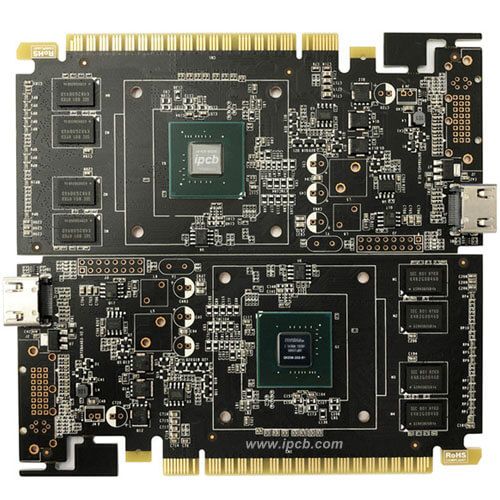With the development of PCBA science and technology, the types and functions of electronic components are becoming more and more perfect, and their branches are becoming more and more magnificent. But selecting components has also become a technical task. With the development of science and technology, the types and functions of electronic components are becoming more and more perfect. However, selecting components has also become a technical task. Many young partners will take many detours and suffer many losses when they first enter the industry or design PCB boards.
1) Universality principle: If the selected components have been widely used and verified, the use of cold door and side door chips should be minimized to reduce development risks.
2) Substitution principle: Try to select components with more pin to pin compatible chip brands.
3) The principle of high cost performance: when the function, performance and utilization rate are similar, try to choose components with better price to reduce the cost.
4) Principle of sustainable development: try to select components that will not stop production within the foreseeable time.
5) Principle of resource conservation: Try to use all functions and pins of upper components.
6) The principle of convenient procurement: try to select components that are easy to buy and have a short supply cycle.
7) Upward compatibility principle: try to select components used in previous old products.

With the development of miniaturization and precision of electronic products, the PCBA assembly and processing density adopted by chip processing plants is getting higher and higher, the solder joints in circuit boards are getting smaller and smaller, while the mechanical, electrical and thermodynamic loads they carry are getting heavier and heavier, and the requirements for stability are also getting higher and higher. However, PCBA solder joint failure will also be encountered in the actual processing. Main reasons for PCBA processing solder joint failure:
1) Poor component pins: coating, pollution, oxidation, coplanar.
2) Poor PCB pad: coating, pollution, oxidation, warping.
3) Solder quality defects: composition, impurities not up to standard, oxidation.
4) Flux quality defects: low flux, high corrosion, low SIR.
5) Process parameter control defects: design, control and equipment.
6) Defects of other auxiliary materials: adhesives and cleaning agents.
Methods for increasing the stability of PCBA solder joints: For the stability experiment of PCBA solder joints, including stability experiment and analysis, the purpose is to evaluate and identify the stability level of PCBA integrated circuit devices on the one hand, and provide parameters for the stability design of the whole machine. On the other hand, it is necessary to improve the stability of solder joints during PCBA processing. Therefore, it is necessary to analyze the failed products, find out the failure mode and analyze the failure cause. The purpose is to modify and improve the design process, structural parameters and welding process, and improve the finished product rate of PCBA. The failure mode of PCBA solder joint is the basis of predicting its cycle life and establishing its mathematical model.
What factors affect the quality of PCBA wave soldering
PCBA circuit board is composed of several electronic components arranged and combined on PCB by designers according to predetermined technical requirements through wiring and installation design. When arranging and assembling, the designer must abide by the constraints of wave soldering process and cannot act on his own. For hundreds of electronic components arranged and combined, different metals can be connected with solder. A large number of welding points need to be welded simultaneously in a few seconds, which requires that the body metal has the ability to weld easily and quickly. Therefore, materials with good weldability must be selected in the design. Heating and melting solder is an essential part of welding operations. Flux is usually used on the welding surface to promote wetting of the solder to the weld metal. It has been proved that the strength and reliability of solder joints depend entirely on the good wettability of the metal to be welded. Therefore, the choice of solder and flux with excellent performance is an important factor that directly affects the wetting effect. In the metallurgical process of solder joints, temperature, time and pressure conditions are the key. Therefore, good wave soldering equipment and reasonable selection and control of process parameters are the basis for ensuring the conditions such as temperature, time and pressure. Only by fully considering the above requirements, PCBA wave soldering process can achieve good results.